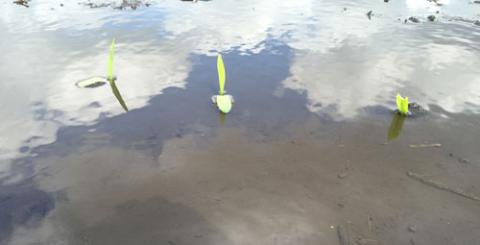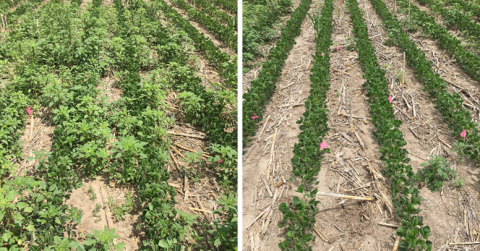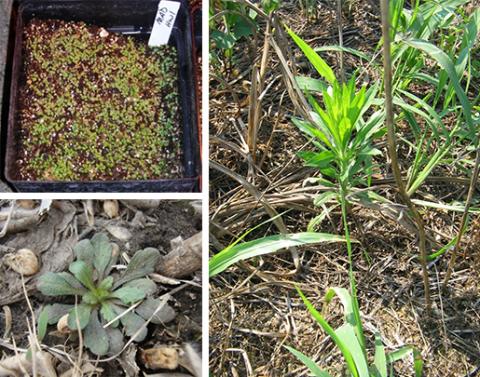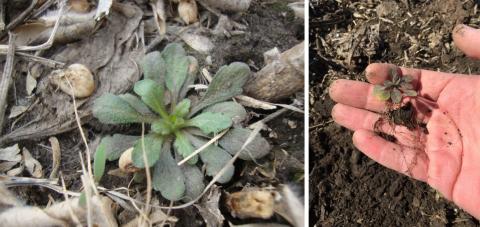Herbicide Considerations When Replanting
June 8, 2017
Due to May flooding from heavy spring rains, replanting of corn and soybean continues in eastern and southern Nebraska. Here are two factors to consider regarding herbicide use in replanting.
Postemergence (Rescue) Herbicide Options for Control of Glyphosate-Resistant Marestail in Corn and Soybean
May 24, 2017
Several factors have contributed to delayed applications and marestail escapes this spring. Includes recommendations for timely postemergence control in corn and soybean.
Considerations for Managing Herbicide-Resistant Weeds in Soybeans: Spring Burndown
April 28, 2017
One of the challenges with spring burndown application is timing. Wet and windy conditions can delay spraying and under these conditions weeds can grow significantly in a few days. Waiting until planting to spray troublesome weeds such as marestail may be too late to achieve adequate control. In addition, waiting until soybean planting limits the available herbicide options since there are relatively few labeled effective burndown chemicals for spraying at this time. The following section identifies key treatment aspects to consider for several resistant varieties in Nebraska.
Terminating a Cereal Rye Cover Crop – Things to Consider
April 13, 2017
Fall-planted cereal rye is increasingly used as a cover crop in corn and soybean cropping systems in Nebraska. The authors address control of cereal rye through herbicide and mechanical measures and include a USDA NRCS map of recommended termination deadlines.
Keys to Managing Herbicide Resistance in Soybeans
April 6, 2017
Are last year's weed escapes still haunting you? Applying these six key management practices and five key timings can help you improve control of herbicide-resistant weeds this year.
Nebraska Extension Pest of The Month: Horseweed
January 5, 2017
Horseweed (marestail, Conyza canadensis L.) is a unique weed species that can emerge in both fall and spring. In Nebraska, unlike the eastern Corn Belt, horseweed populations predominantly emerge in fall as a winter annual.
Finding the Balance Between Corn Yield and Cover Crop Biomass
November 29, 2016
Cover crops can provide either ecosystem services or forage benefits but understanding how they fit in cropping systems is still limited. This study assessed the effects of planting date (early and late), plant population (low, average, and high) and corn maturity (80 to 115 days relative maturity) on corn yield.
Fall is Optimal for Marestail Management
October 28, 2016
With corn and soybean harvest nearing completion in Nebraska this is a great time to begin scouting fields for winter annual weeds like marestail. Timing is critical to successful control of marestail, especially in no-till soybeans as many populations have evolved resistance to glyphosate and ALS-inhibiting herbicides.








